The concept and illustrations of “twelve stones in the Bible” are quite intriguing. We know that God uses great symbolism in incredible ways. The Bible weaves together a fine tapestry of history, theology, and symbolism. We can find meaning in some of the smallest details found in Holy Scripture. This certainly applies when we talk about the significance of the 12 stones in the Bible.
Remember that the ultimate Author of the Bible has an IQ of infinity, He is the creator and excels beyond measure in every aspect of every topic. Concerning symbols, one such intriguing symbol throughout the scriptures is the recurrent theme of twelve stones. You will find it in various places in the Bible.
These stones aren’t simply geological forms. They are lasting memorials and powerful reminders of God’s covenant with His people. The 12 stones each represented the number of the tribes of Israel and would serve as a reminder that the word of the Lord was and is totally reliable and God’s faithfulness never wavers.
Let’s look from the banks of the Jordan River to the sacred garments of the High Priest in The Tabernacle, from an ancient altar on Mount Carmel all the way to the heavenly foundations of the New Jerusalem! We will find the twelve stones’ beauty and symbolism in these texts. Let’s have a look!
1: The Breastplate of the High Priest (Breastpiece)
The Tabernacle and its Significance:
The Tabernacle was basically a portable sanctuary to be used by the Israelites to worship God during their time in the wilderness after the Exodus from Egypt. Its design and function were given by God to Moses and was the place of the sacrificial rituals of the children of Israel. God gave intricate instructions about the structure and function of the Tabernacle as it was the dwelling place of God’s presence among His people.
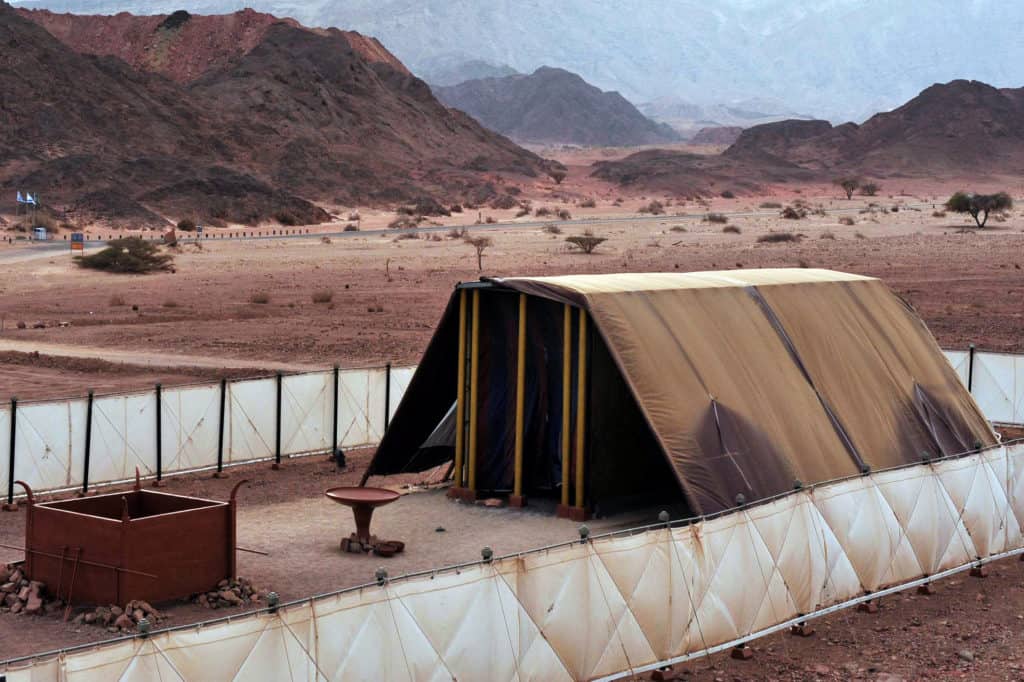
The parts of the Tabernacle are fascinating and we would encourage you to read more about that. You can find it in Exodus, chapters 25-31. However, for our purposes, we will look at how the twelve stones relate to the High Priest’s Breastplate.
The High Priest
The high priest, who was the foremost religious leader in the whole nation of Israel, played a pivotal role in the rituals, sacrifices, and ceremonies held within the Tabernacle. Because of the importance of his role, his attire had great significance, symbolizing his sacred duties, his proximity to a Holy God, and the representation of the entire nation of Israel before God.
Aaron was chosen by God to be the first High Priest and the priestly garments Aaron or any other priest wore were very significant in the religious ceremonies of ancient Israel.
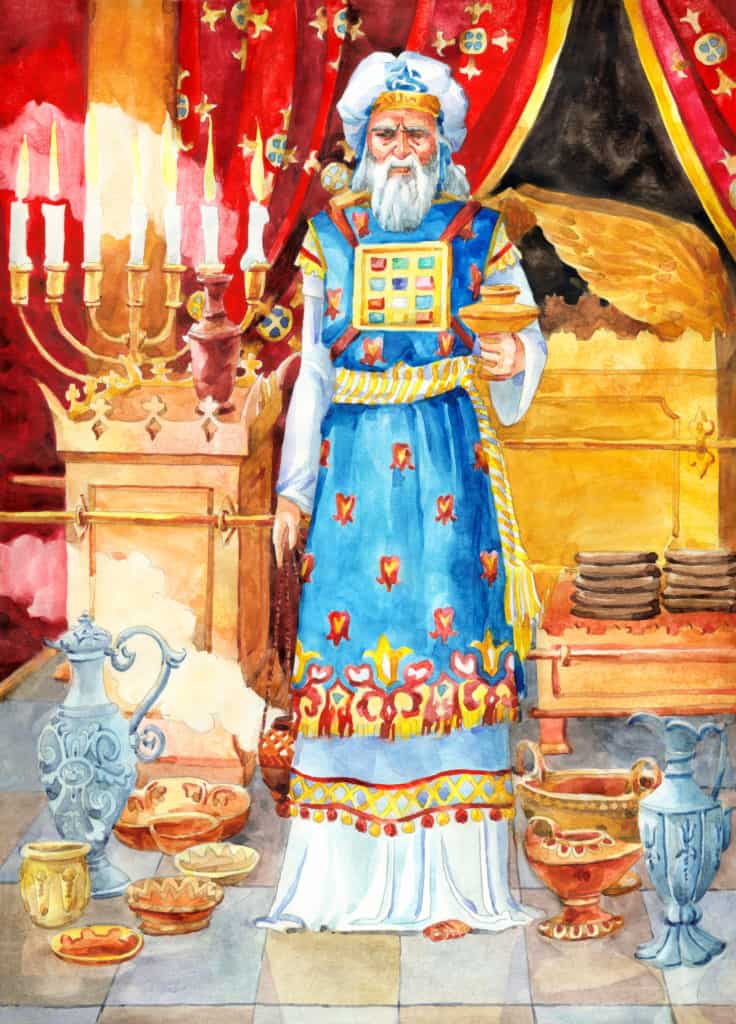
So, what is the significance of twelve stones in this instance? It has to do with the breastplate or the breastpiece on the garment of the high priest. Note: Depending on the Bible translation you are using it can be called the breastplate, breastpiece, chestpiece, etc.
The Hebrew word for the breastpiece is “choshen.” It is also listed as the breastpiece of Judgment and the breastplate of judgment (once again depending on which translation of the Bible from which you are reading).
The breastpiece was on the front of the High Priest Garment on the Ephod, which was formed similarly to an apron. As the breastpiece was a fabric square crafted from gold, blue, purple, and scarlet yarns, and folded double. Gold cords secured it in place, connecting to two golden rings. Set in gold, the breastplate featured four rows of three stones each, with every stone engraved with the name of one of the twelve tribes.
Here are the stones of the breastplate (or breastpiece). On the first row were carnelian, chrysolite, and beryl. On the second row was turquoise, lapis lazuli, and emerald. The third row would be jacinth, agate, and amethyst. The fourth row would be made of topaz, onyx, and jasper.
God clearly spells out in detail how there should be 4 rows of stones on the breastpiece and each will contain 3 precious stones each, once again symbolizing the number of the tribes of the people of Israel. Let’s look at Exodus, chapter 28 for the NASB version.
22 You shall also make on the breastpiece twisted chains of cord work in pure gold. 23 And you shall make on the breastpiece two rings of gold, and shall put the two rings on the two ends of the breastpiece. 24 And you shall put the two cords of gold on the two rings at the ends of the breastpiece. 25 You shall put the other two ends of the two cords on the two filigree settings, and put them on the shoulder pieces of the ephod, at the front of it. 26 And you shall make two rings of gold and place them on the two ends of the breastpiece, on the edge of it, which is toward the inner side of the ephod.
27 And you shall make two rings of gold and put them on the bottom of the two shoulder pieces of the ephod, on the front of it close to the place where it is joined, above the skillfully woven band of the ephod. 28 And they shall bind the breastpiece by its rings to the rings of the ephod with a violet cord, so that it will be on the skillfully woven band of the ephod, and that the breastpiece will not come loose from the ephod.”
Exodus 28: 22-28
Once again I want to point out how fascinating it is to go more in detail about the Tabernacle and the functions of the High Priest. However, for the purpose of writing about the topic of twelve stones, we will move to the next occurrence in the Bible.
Now, we will look at the story of the crossing of the Jordan River.
2: The Memorial Stones at the Jordan River
Let’s travel back to the book of Joshua, chapter 4 to the scene of the Children of Israel crossing the Jordan River. When the feet of the priests carrying the Ark of the Covenant stepped into the water of the Jordan River (which was at flood stage at the time), the waters backed up and the river stopped flowing.
It seems that it may have stopped forming something like a wall of water allowing the Israelites to walk across the river bed on dry land very similar to what they had at the crossing of the Red Sea. The priests carrying the Ark of the Covenant stopped on the dry land in the middle of the riverbed while Joshua carried out God’s instructions about the sets of stones.
The First Set of Stones
So Joshua had instructions for a couple of different tasks concerning the 12 stones. Let’s have a look:
4 So Joshua called the twelve men whom he had appointed from the sons of Israel, one man from each tribe; 5 and Joshua said to them, “Cross again to the ark of the Lord your God into the middle of the Jordan, and each of you take up a stone on his shoulder, according to the number of the tribes of the sons of Israel.
6 This shall be a sign among you; when your children ask [c]later, saying, ‘What do these stones mean to you?’ 7 then you shall say to them, ‘That the waters of the Jordan were cut off before the ark of the covenant of the Lord; when it crossed the Jordan, the waters of the Jordan were cut off.’ So these stones shall become a memorial to the sons of Israel forever.”
Joshua 4:4-7 NASB
So God had instructed Joshua to make this stone memorial out of stones from the middle of the Jordan. These stones of remembrance were a reminder of God, His faithfulness, and God’s promise to the nation of Israel of God’s work and faithfulness. The stones served as a memorial to this incredible event when God kept His promise to lead Israel into the Promised Land.
Upon reaching the opposite bank, a representative from each of the 12 tribes selected a stone and brought them to the shore and they were arranged as a memorial. The twelve stones of Jordan were designed to serve as a testimony and symbol of God’s unwavering guidance. That special place was to be marked for future generations.
Second Set of Stones
After the stone monument was finished on the Promised Land side of the waters of the Jordan, Joshua also set another pile of stones in the middle of the river on dry ground as we see in this Bible verse:
9 Then Joshua set up twelve stones in the middle of the Jordan at the place where the feet of the priests who carried the ark of the covenant were standing, and they are there to this day.
Joshua 4:9 NASB
So, as long as the priests’ feet (those who were carrying the Ark of the Covenant of the Lord) were standing in the riverbed as God had instructed, the waters of the river were basically held back by the hand of the Lord. What an awesome display of the magnificence and power of God!
These memorials of what God did at the Jordan River are our 2nd example of the significance of the 12 stones In the Bible. Now let’s take a look at some others.
3. Twelve Stones as an Altar (1 Kings 18)
This is one of my favorite stories in the Bible. This is the account of Elijah challenging the prophets of the false God, Baal, to prove who the One True God was. You may remember the story. This is when the great nation of Israel was divided into two kingdoms (the northern kingdom of Israel and the southern kingdom of Judah).
Elijah’s challenge was that both the prophets of Baal and then Elijah himself would build an altar and sacrifice a bull on the altar. Both would call on their respective Gods to burn up the offering with fire.
Well, it gets a bit comical here, as the prophets of Baal pray to their false God asking it to consume the sacrifice with fire. They cried out to the false God for hours, shouting, cutting themselves, etc. Elijah basically pokes fun at them telling them that maybe their God is asleep or he’s away on business, etc., etc. Anyway, no fire for them!
So, when it is Elijah’s time, he builds his altar and puts the sacrificial bull on there. But, he goes a step further to prove the power of his God. He calls for the whole altar to be drenched with water. It was so wet that it even filled the trench around the altar as well. Let’s have a look and see where the 12 stones come into play in this story.
30 Then Elijah said to all the people, “Come forward to me.” So all the people came forward to him. And he repaired the altar of the Lord which had been torn down. 31 Then Elijah took twelve stones, corresponding to the number of the tribes of the sons of Jacob, to whom the word of the Lord had come, saying, “Israel shall be your name.” 32 And with the stones he built an altar in the name of the Lord; and he made a trench around the altar, large enough to hold two measures of seed.
33 Then he laid out the wood, and he cut the ox in pieces and placed it on the wood. 34 And he said, “Fill four large jars with water and pour it on the burnt offering and on the wood.” And he said, “Do it a second time,” so they did it a second time. Then he said, “Do it a third time,” so they did it a third time. 35 The water flowed around the altar, and he also filled the trench with water.
1 Kings 18: 30-35
So, as you can see, Elijah used 12 stones to represent the number of the tribes of the sons of Jacob. And, by soaking it all in water, he was determined that his God would get all the glory for what would happen. So, here is the next part of the story.
36 Then at the time of the offering of the evening sacrifice, Elijah the prophet approached and said, “Lord, God of Abraham, Isaac, and Israel, today let it be known that You are God in Israel and that I am Your servant, and that I have done all these things at Your word. 37 Answer me, Lord, answer me, so that this people may know that You, Lord, are God, and that You have turned their heart back.” 38 Then the fire of the Lord fell and consumed the burnt offering and the wood, and the stones and the dust; and it licked up the water that was in the trench. 39 When all the people saw this, they fell on their faces; and they said, “The Lord, He is God; the Lord, He is God!”
1 Kings 18:36-39
Wouldn’t you have loved to have seen that? It’s an amazing account of the supernatural work of God and the faith of one of His servants. And it serves as our 3rd example of the significance of the 12 stones in the Bible.
Now we are going to make a large leap into the book of Revelation to once again see the significance of the 12 stones in the Bible.
4. Twelve Stones in the New Jerusalem (Revelation 21)
Now we are going to leave the old testament times and go deep into the New Testament to the next to last chapter of the Bible – Revelation, chapter 21. The Apostle John has been describing the end times and now he is being shown an incredible glimpse of the New Jerusalem, essentially, heaven’s capital city.
The New Jerusalem will be a city unlike anyone could ever imagine. The glory and beauty in the vision that John saw would be unparalleled.
Twelve Stones of the Gates
Let’s take a look at the scripture passage in Revelation 21 where we again see an occurrence of the significance of the 12 stones in the Bible.
10 And he carried me away in the Spirit to a great and high mountain, and showed me the holy city, Jerusalem, coming down out of heaven from God, 11 having the glory of God. Her brilliance was like a very costly stone, as a stone of crystal-clear jasper. 12 It had a great and high wall, with twelve gates, and at the gates twelve angels; and names were written on them, which are the names of the twelve tribes of the sons of Israel.
Revelation 21: 10-12 NASB
So, here we see the angel revealing to John a look at the New Jerusalem. He sees that it has twelve gates – the exact number of the tribes of the sons of Israel, and on those gates are twelve names of the twelve tribes of the sons of Israel,
Another Illustration of the Number 12
Once again we see an incredibly important role of 12 stones in the Biblical narrative. However, in this instance, we see the number 12 being used again in this chapter regarding the foundation of the wall of the New Jerusalem.
However, this time we see the names of the 12 apostles on each foundation stone of the wall of the New Jerusalem.
“And the wall of the city had twelve foundation stones, and on them were the twelve names of the twelve apostles of the Lamb.” God chose to honor the twelve apostles as they were obedient to his call to spread the truth of God, his plan of salvation, and spread the news of the grace of God.
Since one of the original 12 apostles, Judas betrayed Jesus, there is some theological debate on which person might replace his name on the foundation.
Some think it was Matthias, whom the Apostles chose to replace Judas. However, for several reasons, some theologians think that the Apostles rushed in choosing Matthias and that the 12th apostle was ultimately the Apostle, Paul. Therefore, many believe that his name will be on one of those foundation stones.
So, the list of the Apostles’ names who are likely on those foundation stones are:
Simon Peter, Andrew, James, John, Philip, Bartholomew(Nathanael), Matthew(Levi), Thomas, James (son of Alphaeus), Thaddaeus, (Jude, son of James), Simon the Zealot, and Paul or Matthias.
Wrapup
So, you can see in the incredible significance of the 12 stones in the Bible. Some point out that, in the instances of jewel stones, the variety of the stones can be interpreted or viewed as a symbol of diversity.
Each stone has its own color and character just as God’s people have varied races, backgrounds, and experiences. However, as we trust Christ as our Savior, the cross of Jesus Christ unifies us as believers.
Also, since gemstones are formed underground with intense heat and pressure, some say the stones can symbolize the tribulations, trials, and troubles that a believer can go through, coming out as people who shine and reflect the glory of God.
So, the significance of twelve stones in the Bible is quite substantial as we have seen in these examples. Whether it be in ancient times or the Lord’s goodness to us by allowing us in the New Jerusalem in the future, the choice of these ancient stones will continue to carry great meaning and symbolism for the Kingdom of God.
‘

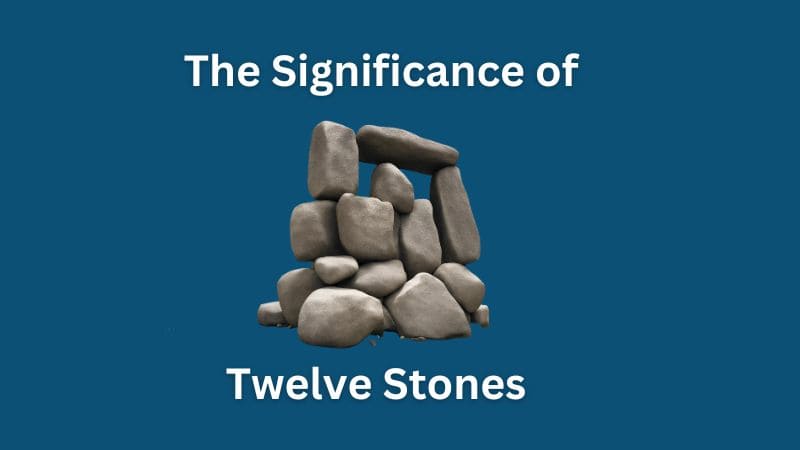

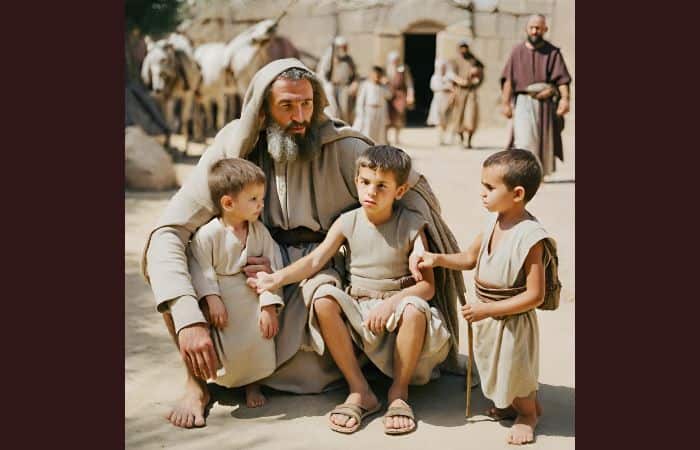
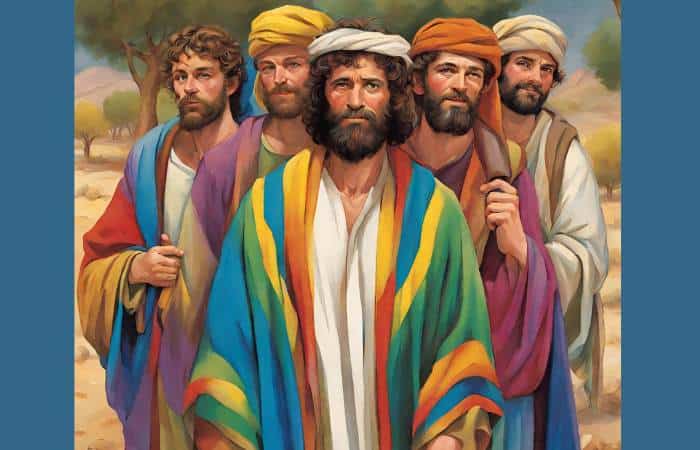
Leave a Reply